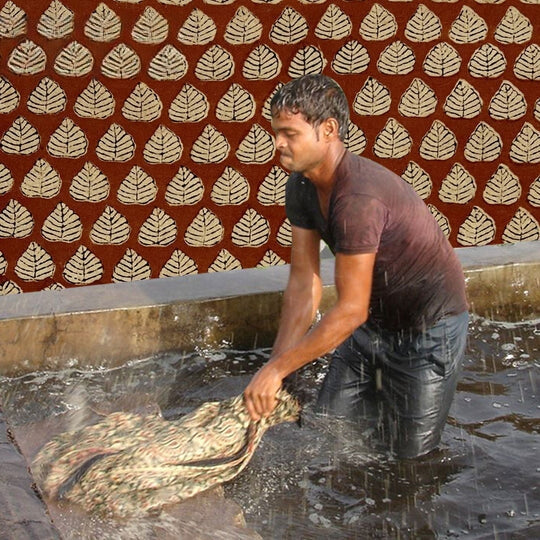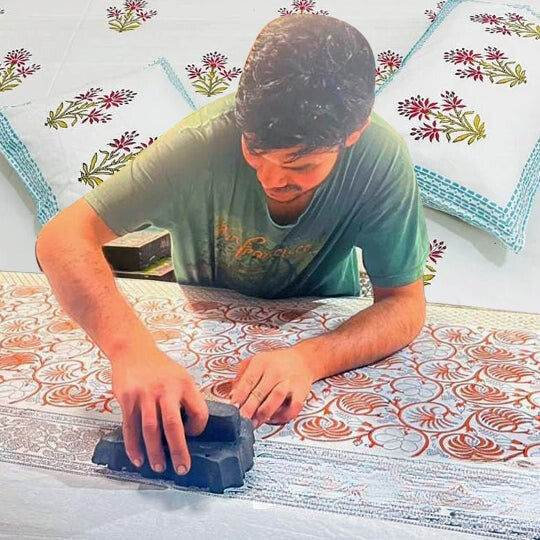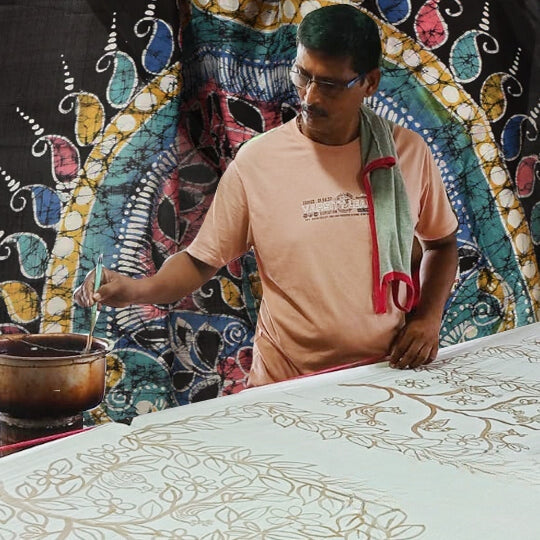INTRODUCTION:
One of the most priceless weaves is the Paithani saree, which is frequently conserved and handed down from mother to daughter as a treasured heirloom. The colourful Paithani drape, which has been an essential part of Maharashtrian customs for millennia, bears immense cultural importance in every thread and tassel. Almost every bride opts to wear a paithani saree on her wedding day.
 Paithani saree
Paithani saree
HISTORY:
It comes from one of the Satavahana Dynasty's royal dynasties that once ruled Paithan, a mediaeval town close to Aurangabad. Although it is stated that this indigenous skill was particularly prosperous during the rule of Aurangazeb in the Mughal dynasty. It was supposed to have been spread by the royal dynasties of the area and to have used the finest silk threads from China and locally spun pure gold zari. The domestic silk strands from Bangalore are used to create the contemporary renditions of the sari from Paithan and Yeol, while Surat zari is used for the embellishments.This magnificent weave's lavish, liberal use of gold, together with its floral and bird-inspired motifs, define each and every piece.
TECHNIQUES USED:
A complicated weaving process that begins with the selection of raw silk and precious metals and finishes with the finished product produces a Paithani saree. A century ago, exquisite silk that was used in Paithani was woven locally in Jari using gold and silver metal before being imported from China. Today, mulberry silk from Bangalore and jari from Surat are also used. Vibrant hues are produced when natural materials like minerals, plants, minerals, and vegetables are combined to dye silk.
The raw silk bundles are cleaned, coloured, and then transferred to reels (asari) to separate each thread before being loaded onto the loom. To bring out the design, colour, and intricacies and transform them into magnificent cloth, the loom setup involves meticulous handling and mounting of each thread. Every Paithani saree is one-of-a-kind and is created utilising an ancient method of tapestry weaving in which warp and weft threads are woven together on a handloom. This approach still works today and gives you full control over each thread. The threads are interlocked by the weavers when employing multiple base colours.The centuries-old Paithani weaving technique is renowned for its unique artwork and background. At its core, Paithani uses the time-honoured tapestry technique, in which a variety of coloured threads are woven together with gold and silver threads to produce a fascinating piece of silk.
MOTIFS USED:
The asavali (vine and flowers) and akruti (squarish floral) patterns were the earliest examples of classic Paithani designs during the Peshwa dynasty. The kalas pakli (petal form), pankha (fan), narali (coconut), and rui phul are more examples of traditional patterns (cotton bud). The humaparindas (the pheasant), bangdimor (the peacock in a bangle), tota maina (the parrots), anarvel (the pomegranate flower), and beheshti Parinda are a few examples of Mughal-inspired themes (the bird of paradise).

Peacock motif
The drakshavel (vine and grapes), kuyri (paisleys), and gokarna vel themes are still often used (blue pea flower). Other patterns on the pallus include the Panja, a geometric flower-like motif that is frequently accented in red, and the Barwa, which is made up of twelve ladder-like strands with three strands on each side.
TYPES OF PAITHANI SAREES:
-
Bangadi mor Paithani saree: Bangadi means bangle and mor signifies peacock in Marathi. In other words, "bangadi mor" refers to a peacock bangle or a peacock weaved into a bangle. Typically, the motif is woven onto the pallu. One of the Paithani saree's most popular patterns is this one.
-
Ekdhoti weave Paithani saree: A single shuttle is utilised for weaving the weft in the Paithani saree using the ekdhoti weave. The weft yarn is a distinct colour from the warp yarn. These saris feature a narali border and simple butti patterns like coins or peas.
-
Paithani sarees in traditional colours: Paithani sarees come in a variety of colors, but the three most popular are kali chandrakala (a jet-black saree with a red border), Raghu (parrot green colour) , and Shirodak (pure white).
 Shirodak
Shirodak
STRIKING FEATURE :
The uncommon light and shade effect that is created is what makes Paithani weave so well-known.
 Uncommon shade
Uncommon shade






Leave a comment